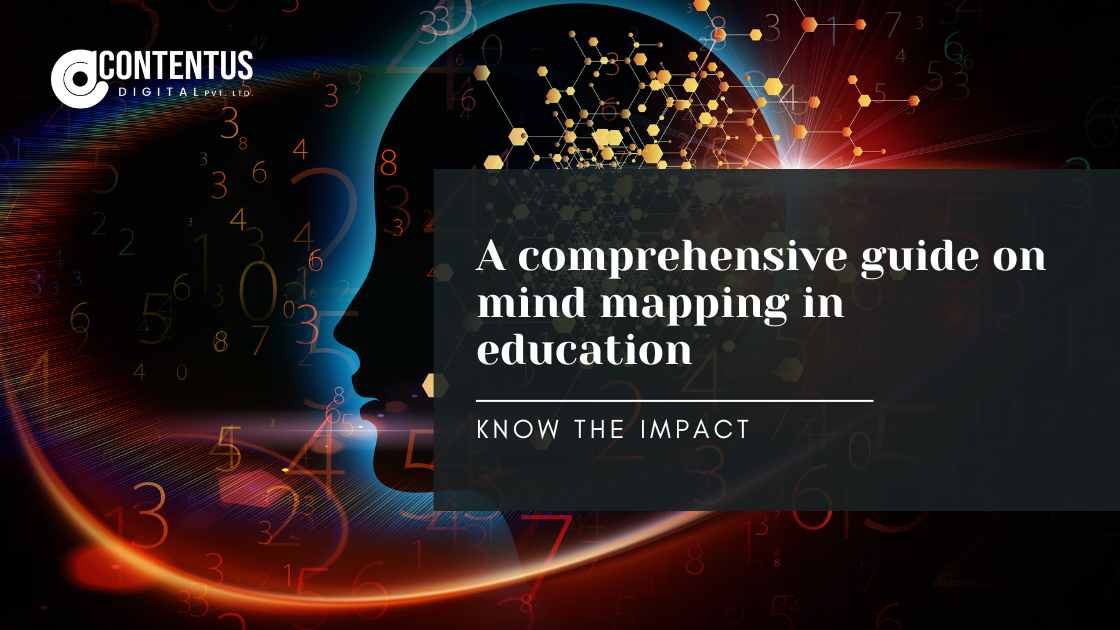Mind mapping in education
Table of content
1 | Introduction |
|---|---|
2 | How to create mind mapping in education? |
3 | Mind map examples for education |
4 | Importance of education mind map |
5 | Tips for mind mapping in education |
6 | Conclusion |
Mind mapping in education is a visual representation of a topic or concept in a hierarchical manner. Simply you have to initialise the mind map by placing a topic at the centre of a blank page. Based on this topic, you need to create several branches and subtopics. So, the aim behind creating a mind map is to establish strong relationships between multiple concepts.
This learning tool revolutionises the way of learning by crafting visuals and words together within a single page. Thus, students can easily record and memorise information in an organised manner. So, in this blog, you will gain a comprehensive idea about educational mind mapping.
How to create mind mapping in education?
- First, decide on a main topic for the mind map and place it at the centre of your page. Then, you need to understand the objective behind the mind map for your students. It will assist you in creating necessary interconnections and branches in the further steps of mind mapping.
- Next, add the branches from the main topic. These are known as the primary branches which help the audience understand how you have broken down the lengthy topic into small parts.
- After that, you can add some branches to the primary branches. So, these branches will be the secondary branches in the mind map. But it’s not mandatory to add secondary branches in every mind map. You have to add these based on the complexity of your topic. If your topic doesn’t require adding secondary branches, leave it.
- It’s necessary to add some keywords, key phrases and long sentences in the mind map for students. So, in this step, you should add keywords and phrases whenever possible. These are easy to understand for the students. So, ensure that you have added some keywords and phrases which are relevant to the topic.
- Finally, you have to find out the hidden connections between several sub-topics. This is one of the crucial tasks for creating an educational mind map. Here, all the branches including the primary and secondary branches will be the sub-topics. You can use different colours to create different levels for adding the connections.
Did you know?
According to Matchware 56% of students with learning differences recommended mind mapping tools for education.
Mind map examples in education
- Learning a language
To learn a language, the students need both theoretical and practical knowledge. Theoretical knowledge is essential for strengthening writing skills and practical skill improves speaking fluency. Thus, by creating a mind map for this purpose, you can craft which path a student should follow and what actions they should take to learn a language.
For instance, if you create a mind map for English verb combinations, you have to add specific actions to perform with the verbs like gerunds, pronouns, etc. As a result, the mind map will help to grow theoretical, as well as practical skills.
- Note-taking
Do your students copy the notes from the blackboard? If yes, then you need to omit this orthodox procedure. These types of lengthy notes cause the complexity of studying. Instead, you should create a mind map template for taking notes for your students.
In this template, you can add a topic and create hierarchical relationships between several sub-topics. Then, add the necessary keywords and phrases to your template. Furthermore, you can incorporate some images wherever possible. In this way, by using a note-taking template, you can break the stereotypical learning method and encourage the students to learn creatively. This approach becomes a perfect example of mind mapping for teaching.
- Preparing for exam
Students need to overcome several challenges while preparing for their exams, such as procrastination, lack of concentration and motivation, lack of time management skills, etc. So, by designing a visual illustration for their exam preparation strategies, you can help them to overcome these hurdles.
For this mind map, you can create a SWOT (Strengths, Weaknesses, Opportunities, and Threats) analysis which will help your students to overcome those challenges. So, you should include several sub-topics from the notes and lectures. Then, give timeframes, available resources, lacking areas, and criteria against each note and lecture. These things will help the students easily identify their strengths and issues. As a result, they feel motivated to prepare for their exam, navigate the progress, and revise their lessons. Thus, it becomes one of the most helpful education mind map examples for students.
- Health management
As we are aware of the fact that – ‘health is wealth’ it’s necessary for every student to stay healthy and fit. Also, we shouldn’t forget that health plays a crucial role in conducting the study habits of the students. So, you can create some handy example mind maps for students to manage their health. For instance, you can include healthy tips for eating, sleeping, playing, physical exercise, and cleanliness for the physical and emotional growth of a student.
Moreover, you can create a mind map template for planning small trips for your students. Here, you may add DIY roles, some competitions, budgets, and other details for the trip. So, this type of template will help you to understand the priorities and requirements for scheduling healthy trips for them.
Importance of education mind map
- Recalling and retaining information
Mind maps guide the students to retain and recall information more easily and naturally. Several studies have shown that students retain information better with an educational mind map rather than with traditional methods. It helps them in their study programmes, collaboration, participation in workshops and some brainstorming ideas.
- Helps to grasp new concepts
When the students learn some new concepts, they need to go through three types of learning processes. These are – meaningful learning, non-learning, and rote learning.
- Meaningful learning indicates when they learn something, memorise it, and connect the relevant pieces of information.
- But what about non-learning and rote learning? Non-learning happens when they forget the information immediately after completing the learning procedure and can’t memorise it. In the case of rote learning, they learn and memorise some information but can’t retrieve complete information.
So, mind mapping in education helps them to overcome the struggles of memorising and take the edge of meaningful learning. By employing mind maps, you can help them embrace new concepts with easy learning, connect valuable information, and stick the information within the memory.
- Breaking down complex relationships
Mind maps create a sequential structure of a topic which helps the students to understand how different layers of concepts are associated with a single topic. As a result, they can easily understand the relationships between several pieces of information. Thus, these make them capable of making effective solutions and creative ideas while working together on a project, research, or other collaborative activities.
- Help in problem-solving
As an educational mind map analyses the relationships between different concepts and helps to establish brainstorming ideas, it becomes an effective problem solver. It helps to generate clear and precise documentation of the concepts, factors, and sub-issues that are related to the main issue. All these things help them to generate a solution more quickly and efficiently.
- Increase creativity
A mind map is a potent tool for visualising thoughts and ideas with natural and structured methods. So, it creates an engaging structure about a concept in the human brain. Hence, it results in organised thinking which supports creativity and allows the students to connect and transition between the ideas.
Tips for mind mapping in education
- The educational mind maps should be clean and uncomplicated. Always add necessary keywords and phrases in the secondary branches. Remember that a clutter-free mind map becomes visually appealing and easy to comprehend.
- You need to utilise different types of mind-mapping techniques for several purposes. Some popular mind-mapping techniques are – tree mind maps, vertical timelines, horizontal timelines, fishbone structures, etc.
- Undoubtedly, mind maps are essential tools for learning. But if you don’t update their content regularly, it becomes valueless. So, you have to upgrade them as per the changing educational requirements.
Conclusion
Educational mind maps are great tools for understanding complex and large concepts. They simplify and streamline those concepts into smaller pieces. In this way, it helps the students to learn, prepare for exams, participation in research and collaborative work, and more.








I’ve been searching answers to this issue, and your post solved it.